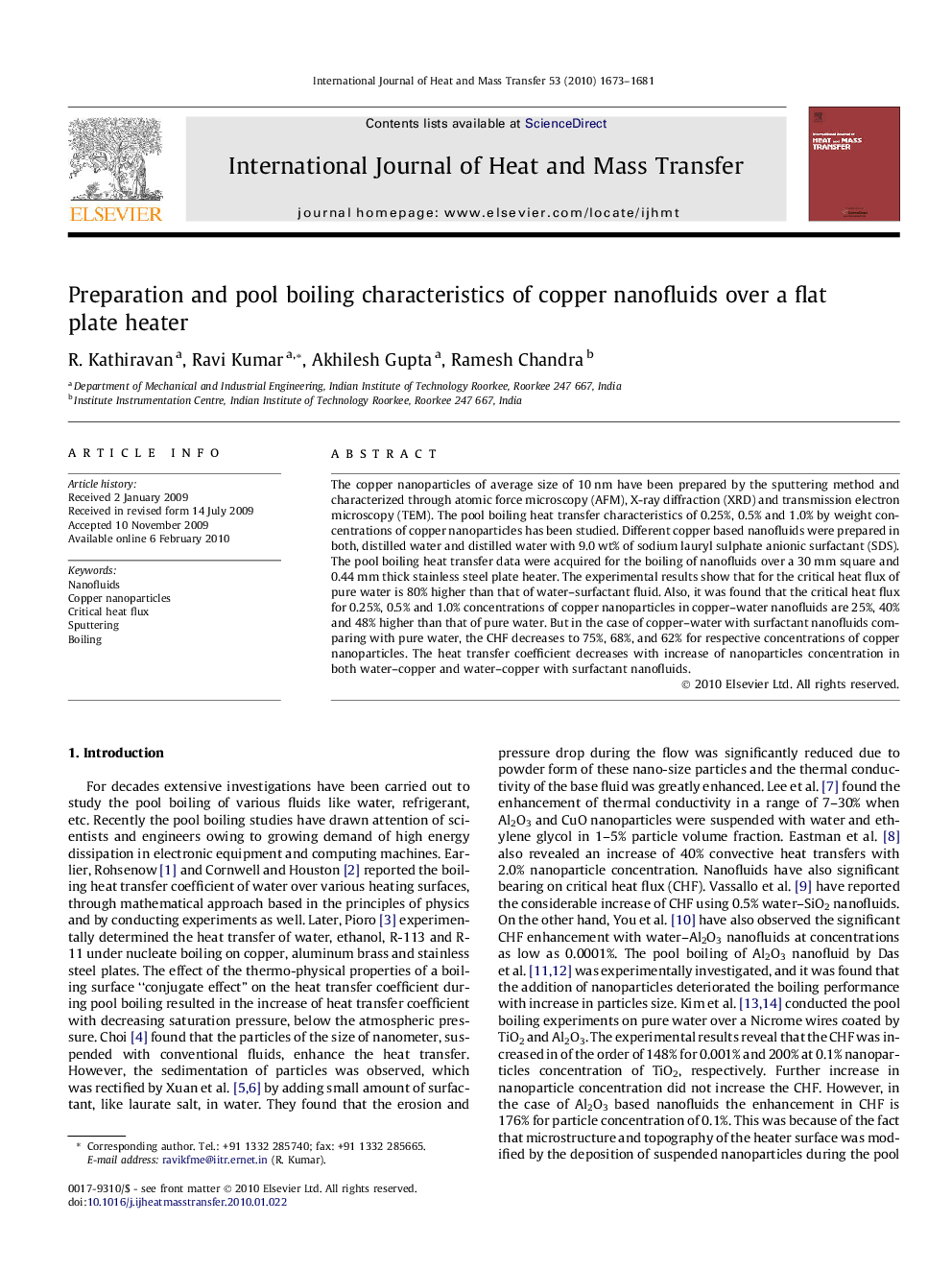| Article ID | Journal | Published Year | Pages | File Type |
|---|---|---|---|---|
| 660130 | International Journal of Heat and Mass Transfer | 2010 | 9 Pages |
The copper nanoparticles of average size of 10 nm have been prepared by the sputtering method and characterized through atomic force microscopy (AFM), X-ray diffraction (XRD) and transmission electron microscopy (TEM). The pool boiling heat transfer characteristics of 0.25%, 0.5% and 1.0% by weight concentrations of copper nanoparticles has been studied. Different copper based nanofluids were prepared in both, distilled water and distilled water with 9.0 wt% of sodium lauryl sulphate anionic surfactant (SDS). The pool boiling heat transfer data were acquired for the boiling of nanofluids over a 30 mm square and 0.44 mm thick stainless steel plate heater. The experimental results show that for the critical heat flux of pure water is 80% higher than that of water–surfactant fluid. Also, it was found that the critical heat flux for 0.25%, 0.5% and 1.0% concentrations of copper nanoparticles in copper–water nanofluids are 25%, 40% and 48% higher than that of pure water. But in the case of copper–water with surfactant nanofluids comparing with pure water, the CHF decreases to 75%, 68%, and 62% for respective concentrations of copper nanoparticles. The heat transfer coefficient decreases with increase of nanoparticles concentration in both water–copper and water–copper with surfactant nanofluids.
